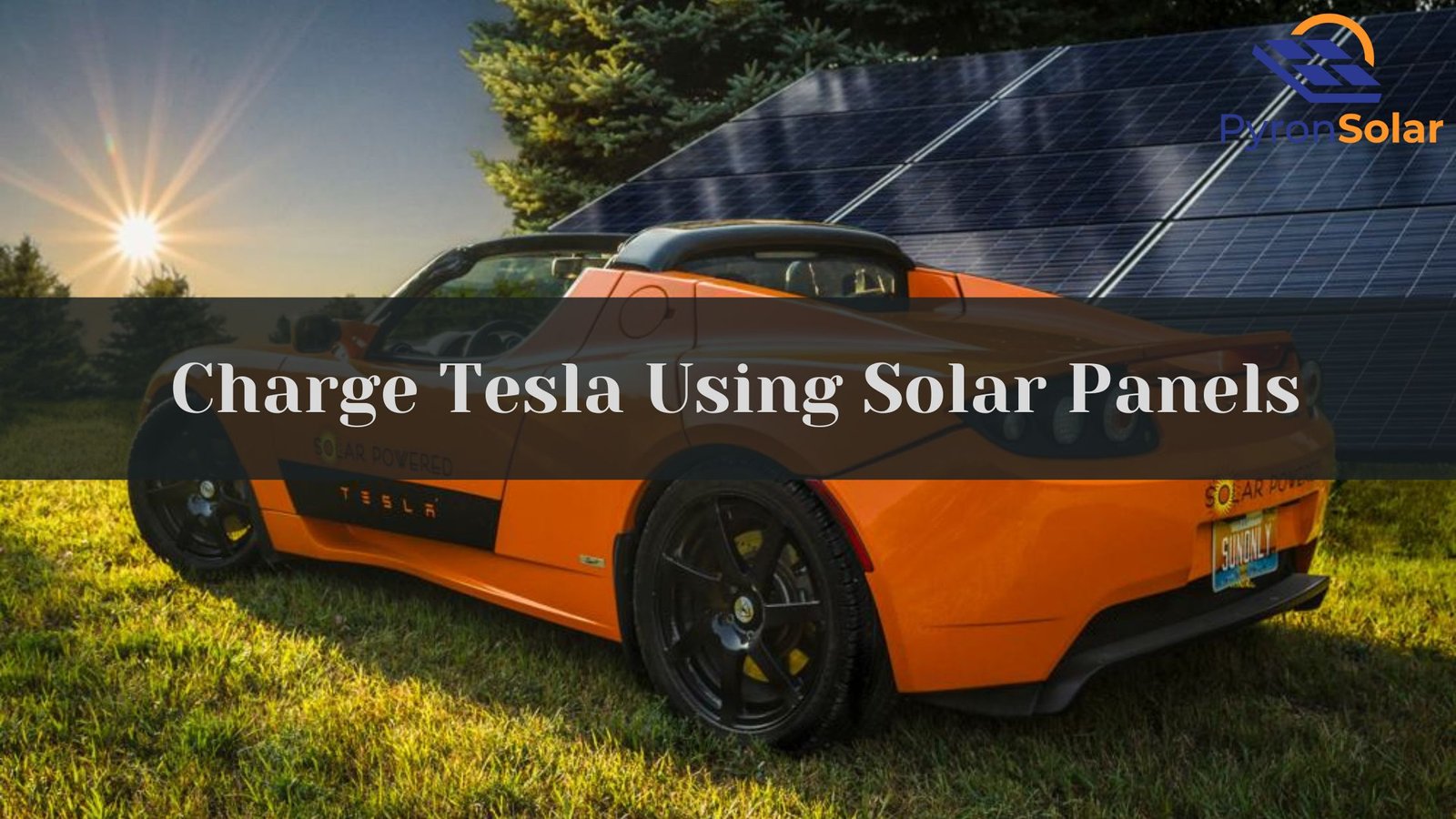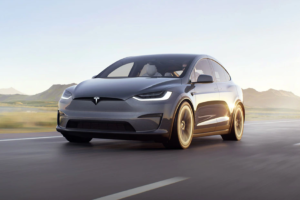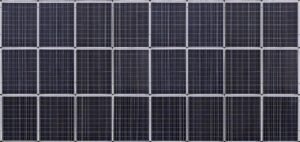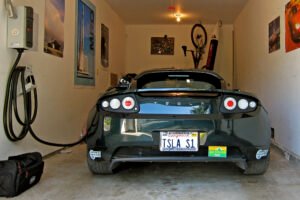If you’ve been driving a Tesla for a while, you may have noticed an increase in your electricity charges. Have you ever wondered about charge tesla with solar panel to reduce costs and make it more environmentally friendly?
Yes, you can charge your Tesla with solar power with the help of solar panels.
The existing electricity supply operates your home’s EV charging outlet. Considering that an electric car has a significant amount of energy storage, the cost of utilizing that energy is comparable to that of average household consumption; therefore, it might be a bit expensive.
In this case, I suggest charging your Tesla with the help of solar panels, which is the ideal solution for both solar panel owners and EV owners.
Although you’re undoubtedly saving money compared to what you were paying for gas, you may be looking for ways to reduce your electricity costs. If you currently drive a Tesla or are considering it, solar energy is an excellent investment and a great method for lowering your electricity expenses.
You’ll need eight to ten solar panels on top of a regular-sized solar panel system to charge your Tesla with solar energy. Driving a gasoline car is much more expensive than recharging a Tesla, but using energy from the sun for renewable power makes charging your Tesla even more affordable.
To have sufficient energy to drive around, a Tesla requires a few steps for charging. However, you need to take a few steps to charge it with solar energy.
Firstly, a complete solar charging station that generates and retains solar energy must be installed.
Secondly, an inverter will convert the DC power into AC power because most electric vehicles, including Tesla, use AC power.
This article will tell you about using solar panels for your Tesla.
How many panels are required to charge tesla with solar power?
It is feasible to use solar energy to recharge a Tesla. But the question is, “How many solar panels are required to construct the solar charging station for your vehicle?”
If you want to recharge your Tesla efficiently at home, you’ll need at least 10 photovoltaic panels. Other solar cars might work differently, but the differences should be manageable. Therefore, figure out how many kilowatts your electric vehicle requires before setting up a solar charging station.
Your solar power station will be capable of generating enough power to power your automobile if you install the appropriate number of photovoltaic panels. And for a Tesla, this figure is approximately 10 panels. However, it could change depending on the Tesla model and the intended travel distance.
Generally, the EPA determines this using a straightforward method. For example, it converts the kWh required for a 100-mile trip in a solar-powered car to miles per gallon in a standard vehicle. Considering that their power output is generally measured in kW, this helps you determine the number of panels you need. Knowing how much kWh a solar panel produces per day can be very helpful because it will give you a rough idea of how many panels are required to charge your tesla car.
Factors determining the number of solar panels
I have researched this and concluded that some factors determine the number of solar panels used to charge the Tesla. As we all know that all teslas are not the same, and so are the regions. Some factors will affect the number of panels required:
- The battery size of your Tesla: Your Tesla will determine how many kilowatt-hours (kWh) of energy you use and need each time you go on a drive.
- How much you drive: According to the Federal Highway Administration (FHA), the average driver travels 14,263 miles per year, about 1,189 miles per month, or approximately 39.11 miles per day. Figure out the range of your Tesla according to its model because every model has different ranges.
- The efficiency of your solar panels: Next, you have to figure out the efficiency of your solar panels. Most solar panels have an efficiency of 250 to 400 watts. Let’s take the Tesla Model S as an example to determine how many kWh your solar panel will produce. With a range of 205 miles, 39.11 miles represent about 19.08% of a full battery. The battery is 100 kWh, so the solar array needs to be able to supply 20 kWh.
- Where your home is located: Lastly, you will have to check out the location of your home where you are going to set up your solar charging station. The efficiency of every solar panel depends on the amount of sunlight you receive in your area.
Steps to charge a Tesla with the help of a solar panel at your home
If you want to charge your Tesla at home conveniently, I’ll tell you a few simple steps you need to consider. Below are the steps for charging a Tesla with solar panels.
Setting up a Tesla Solar Charging Station: The first step is to set up a solar charging station, which will require some devices for this purpose. These devices are
-
- Solar panel
- Solar Controller
- Inverter
- Solar cable
- Battery cables
Once you have all these parts, decide on the structure you want to construct. You can build a carport with solar panels on top since the charging station is for a Tesla. The best carports come with extra storage to keep the batteries and other necessities for the charging point.
Proceed to install solar panels and ensure the safety of the panels. Next, add the batteries and keep them in a dry area. Next, add the controller and other equipment. If you still need clarification, I suggest you hire a professional if you cannot carry out this task.
Get a Tesla mobile connector: Does your Tesla have a mobile connector? You need a mobile connector to connect the car to the charging point if you wish to use energy from the sun to recharge your Tesla. The Tesla mobile connector is easily recognizable because it looks like a laptop charger. I suggest you use a 240V plug-in charger because it ensures fast charging.
Plug the mobile connector into the Tesla: The Tesla should be linked to the other end of the mobile connector. On the driver’s side of the vehicle, locate the charging port and connect the connector. Generally, the gas tanks and the charging port are located next to one another.
Maybe your solar panels have generated enough energy to run the Tesla by now. And you can utilize this energy to power any of your solar-powered vehicles, thanks to the inverter.
Leave your Car to Charge: The last step is to leave your car to charge. Charging the car will undoubtedly be quicker if you use a 240V adaptor. Otherwise, with a 120V adapter, you must give it time. If you want your Tesla to be ready for use in the morning, charge it overnight since it can take up to 6 hours to reach 100%.
Unplug the handle once the battery has been fully charged. Click on the button that you see on the charging handle. You can remove it once the light on the handle turns white. Your Tesla’s charging door automatically shuts after you unplug the handle.
Energy Requirements Of Tesla
The fuel efficiency of electric vehicles is not stated in miles per gallon (MPG) but in miles per gallon equivalent (MPGe). MPGe measures the average distance covered per gallon of gasoline-equivalent energy spent.
In terms of electricity, one gallon of gasoline is equivalent to 36.6 kilowatt-hours (kWh). Your Tesla could cover 100 miles on 36.6 kWh with an efficiency rating of 100 MPGe.
Let’s take the example of the Tesla S model 2022, one of the most efficient electric vehicles on the road, with a range of up to 300 miles per charge. The Tesla S model has a fuel efficiency of 120 MPGe to cover 100 miles on 28.2 kWh. Similarly, I take the example of the Tesla Y model RWD 2022, which has a fuel efficiency of 129 MPGe. It will cover 100 miles on 26 kWh.
Additionally, I will tell you about the Tesla Model 3. It ranges between 220 miles (50 kWh) and 353 miles (82 kWh). The average Tesla Model 3 uses about 0.34 kWh per mile. This model of Tesla has a fuel efficiency of 132 MPGe so it will cover 100 miles in approximately 25.5 kWh.
Every Tesla model has different features and qualities. That’s why every Tesla model’s range and fuel efficiency are also diverse. I have explained the fuel efficiency and the range of the three Tesla models above for a better understanding. It will help you understand the energy requirements of Tesla.
Frequently Asked Questions:-
- How much time will it take to charge a Tesla at a charging station?
There are various Tesla chargers available according to the type of car. For example, if your car has a battery capacity of 50–60 kWh, it would use an AC or DC high-speed charging port, which can take between six and twelve hours at a charging station.
- How long would it take a solar energy system to charge a Tesla?
Charging a Tesla using solar panels can take up to eight hours or several days, depending on the Tesla model, sun exposure, energy output, charger type, and how much energy the battery requires to reach 100 percent.
- Do I have to charge my Tesla every night?
No, you shouldn’t charge your Tesla every night because there is a fact about batteries, it’s best to charge it when it is low. If the battery is at 100% and you still have your charger on, it will only put extra stress and pressure on the batteries and charger, which will negatively affect your battery life.
- What happens if your Tesla runs out of charge?
When your car’s battery is running low, it will warn you with the signal, “Battery power very low.” Heating and A/C reduced,” and after some time, it will send you another warning “Car shutting down, pull over safely.” If you continue, you’ll hear an alarm, and the car will lose power.
- Can you charge a Tesla with portable solar panels?
I am very excited to tell you that you can charge your Tesla with the help of portable solar panels or flexible folding solar panels. They are beneficial when traveling to areas where there are no charging stations.
Conclusion
The era of renewable energy is already here, as is well known. Tesla owners can now recharge their vehicles with clean, cost-free sun electricity by installing solar panels on their cars.
As we have already noticed, solar energy and Tesla’s future are progressing together. You could harness the energy from the sun by installing a solar panel system on the roof of your house to power your home, run an electric car like a Tesla, or even recharge your vehicle.
This car is powered by a battery that uses electricity instead of petroleum, which causes a waste of natural resources. You can also utilize the sun’s energy with the help of solar panels to generate electricity, which makes it more eco-friendly.
Generally, solar cars are the way to go. Tesla is undoubtedly a leader in this sector, even though the business has yet to prevail in the World Solar Challenge.
The information I provided in this article helped you better understand how to charge your Tesla with the help of solar energy.
Ray is an avid reader and writer with over 25 years of experience serving various domestic and multinational private and public energy companies in the USA.




